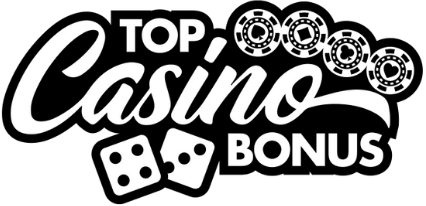Slow playing vs. fast playing in poker: strategic considerations
There’s a lot of glamor in poker these days, televised games, big-name sponsorships, online legends born from dorm room grinds. But the true art of poker strategy? It’s still grounded in the nuts and bolts, knowing when to press the gas and when to take your foot off it. Few decisions test that judgment like the choice between slow playing and fast playing a strong hand.
Table of contents
Situational awareness before technique
Before anything else, you’ve got to read the room. Too many players learn flashy moves, check-raising with a monster, overbet-jamming on the turn, without first learning how opponents think and react. Fast play and slow play aren’t mere tactics; they’re deeply contextual plays dictated by player type, stack depth, table image, and your read on the dynamics in the moment.
Understanding the rhythm of the table
Years back during a sticky 2/5 game at Hard Rock in Tampa, one of those long-haul sessions that starts at noon and ends at sunrise, I saw a kid wreck three buy-ins slow playing top set on a wet board. He missed that the table was full of calling stations. Fast play was printing. He wanted drama. I wanted his chips.
Slow playing: the art of the trap
Slow playing is like walking a dog on a leash. You’re letting them pull, but they think they’re leading. You’ve got a monster, top set, nut straight, even the steel wheel sometimes, and instead of pushing, you ’check-call’ or flat the turn, baiting another bet.
When slow playing works
Perfect slow play spots are rare. You need a hyper-aggressive villain, preferably one who thinks they’re the smartest at the table. You need a dry board where flush or straight draws aren’t screaming for aggression. And ideally, you’ve shown recent weakness to set the trap. Against the wrong player, though? Slow playing is just donating.
Common pitfalls of slow playing
Here’s what newbies get wrong, they slow play just because they’re strong. That’s lazy thinking. If you’re on a dynamic board, two-tone textures, coordinated middling cards, check-calling with your big hand is asking to get outdrawn. Worse, you miss value from second-best hands that would’ve paid you off had you bet out cleanly.
Fast playing: pressure as a weapon
Fast playing is about dictating control. You want to build the pot, deny equity, or bait folds when your opponent thinks you’re bluffing. Think overbets, check-raises, turn barrels. You’re leveraging stack pressure and psychology, not just cards.
When fast playing dominates
In today’s pool of online grinders, especially at mid-stakes and above, fast playing is often the superior line. If you’re dealt AA on a 9-7-2 two-tone board and your opponent calls any flop, bet big on the turn. Deny their equity, get value from worse 9x, and fold out backdoor junk. Hesitate, and you leave yourself vulnerable to backdoored disasters or aggressive floats.
Maximizing value with fast play
Great fast play requires balanced lines. If you’re always fast playing your value, and never your bluffs, you become transparent. The players who really cash in are willing to fast play bottom pair after check-raising the flop, just to muddy the waters. That’s where the real chip extraction happens. They fire confidently because their playbook is unreadable, built on concept not just luck.
Casino style matters: live vs. online
Don’t overlook game format. In a slow-paced live game, especially at loose tables like you’d traditionally find in the Harrah’s Casino poker rooms, trapping can be lucrative thanks to the abundance of casual players seeing too many flops. But online? Especially at aggressive sites like Guts Casino, where multi-tabling players are working with VPIPs under 25, passive lines leak EV. The aggression must scale up accordingly.
Examples across casinos
I’ve seen entire paychecks vanish from local pros slow playing kings preflop at JackpotCity, hoping for traps that never sprung. But I’ve also watched eco-conscious wanderers triple their buy-in using disguised underbets at Hard Rock’s tournaments, relying on deception and timing more than brute force. Each venue breeds its own ecosystem, adjust accordingly, or bleed chips.
Key diagnostics: player psychology
Want to know when to slow play versus fast play? You need to do more than glance at your hand. Study betting tempo. Watch for tells, hand trembling, chip shuffling, overtalking. Those aren’t just quirks. They’re your diagnostics. Combine them with betting patterns and understand each opponent’s emotional baseline. That’s where most decisions are won, not in showdown.
Predictive play and opponent ranges
One of the best reads I ever made was on a retired navy guy who’d bluff the flop, check the turn, and bomb river every time he missed. I stacked him with middle pair because I understood his pattern. No solver in the world teaches that. Understanding these tendencies proves invaluable when deciding if you’re disguising your hand or exploiting theirs.
Blending the two: advanced balancing
Elite players don’t tie themselves to fast or slow play. They blend both fluidly. Imagine flopping top set on a K♠6♥6♣ board. With one opponent, you check behind to trap. With another, you pot the flop and shove the turn. Strategy isn’t static, it’s breath and rhythm. The game teaches you if you’ve got ears to listen and the guts to evolve.
Anecdotes from the trenches
I once slow played pocket queens all the way to the river against an over-aggressive reg at Guts. He three-barrel bluffed his whole stack into my top trips thinking I was floating him. But the very next day, versus the same opponent, I fast played middle pair on a dry board, showed strength early to choke his habit. He folded his usual rainbow bluff hand, shaking his head. That’s advanced balancing. That’s real poker.
Parting wisdom: choose your narrative
Every hand tells a story. And you, as the player, are the author. Do you want to set a trap and hope someone walks into it, or do you want to be the hammer, banging down value and folding equity? One isn’t better than the other in theory. It’s all about timing, intent, and opponent. Poker’s not math alone, it’s war disguised as a card game.
The new generation often leans too much on charts, ranges, Solver spreadsheets. Those are tools, not commandments. What separates amateurs from those who actually make money from this game? Knowing when to throw the script out, look somebody in the eye, and say, I know what you’re doing.





0 Comments